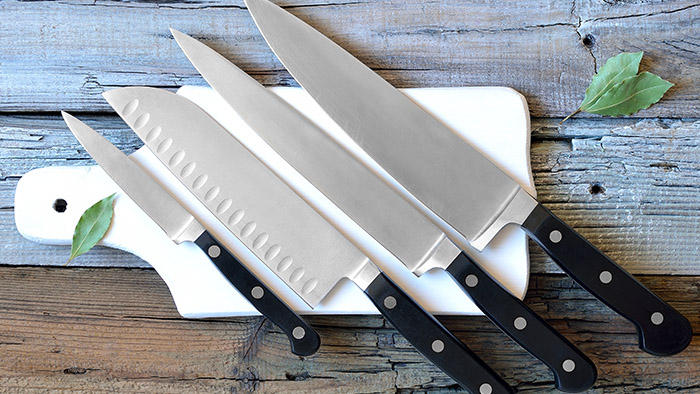
The use of a correct knife can not only ease the task of meal preparation and improve your cooking but can also ensure your safety in the kitchen. The selection of a wrong knife can cause a mess and sometimes a grave injury.
Here are the most popular knives and their recommended purposes:
The chef’s knife: It is the mandatory knife of your kitchen and is multipurpose. It is used for chopping, slicing, dicing and mincing. This knife however should not be used to peel vegetables or fruits. Kindly consider smaller knives or peelers for this purpose.
The carving knife: A carving knife is considered to be your best friend if you are into cooked meats such as poultry and fish. It is perfect for slicing, thanks to its long, thin blade. This knife comes in handy for making thin, slices of large cooked meat. This particular knife is not at all recommended for cutting vegetables or mincing.
The bread knife: This knife features a serrated blade that ensures perfect slices of soft, fresh bread. Its jagged edge is not just limited to slicing loaf but also is useful for gripping foods with slippery surfaces like apples, pineapples or watermelons. The bread knife should not be used for dicing or cutting vegetables or fruits, which is the forte of a chef’s knife.
The paring knife: This is used for cutting or chopping activities that are too small for the chef’s knife. The paring knife does this job with precision and perfection. It is handy for peeling, slicing small fruits and vegetables as well as trimming. This knife should not be used to cut through vegetables or fruits having a hard exterior such as carrots.
The utility knife: As the name suggests this is extremely versatile and a boon for your kitchen. It’s function involves routine tasks like cutting hard breads such as ciabatta /baguettes, cutting cheeses, or slicing meats. This knife is not recommended for mincing.
The butter knife: This is a quintessential, non-serrated table knife with a round point designed to apply butter on bread without tearing through it.
The boning knife: Many cooks simplify carving and get extra servings by boning out a roast when it is partially cooked. The wider stiff blade is used for cutting raw meat and many other trimming operations on less thick cuts of meat.
The cleaver/butcher’s knife: This heavyweight knife is your answer for cutting or chopping meat. The cleaver is used for cutting poultry bones in a single downward stroke, as it uses its weight to cut through tough foods. This knife should not be used for slicing.
The santoku knife: This combines the features of a chef’s knife and a cleaver. This knife is excellent for chopping vegetables. It can be used on most ingredients and is a great option for home cooks with smaller hands that may find chef’s knives a little too big to handle. These knives are not so well-suited for hard surfaced vegetables, fruits or bones.
Cimeter: A cimeter (or scimitar) knife is a cousin of the classic butcher’s knife. Its upward curving blade makes it well suited for cutting and trimming steaks.
This is a your small guide to chose your knife wisely the next time you decide to chop, cut, dice, mince or slice.
—[email protected]